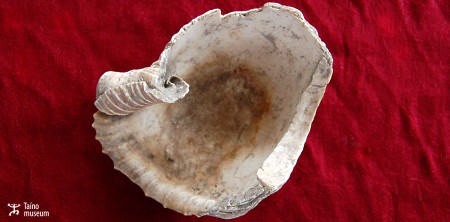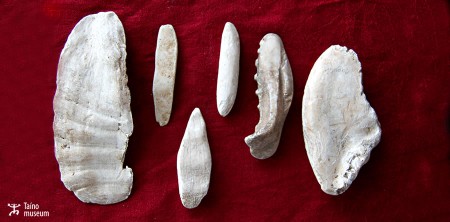The indigenes elaborated cups using shells. The rounded form of the Charonia variegata gives a good possibility to make a cup. This shell is frequently present in Caribbean waters and is a good stuff to eat and for making tools, ornaments and so on. Cups were part of the household and were made for containing…
Read more
Shell Cup










